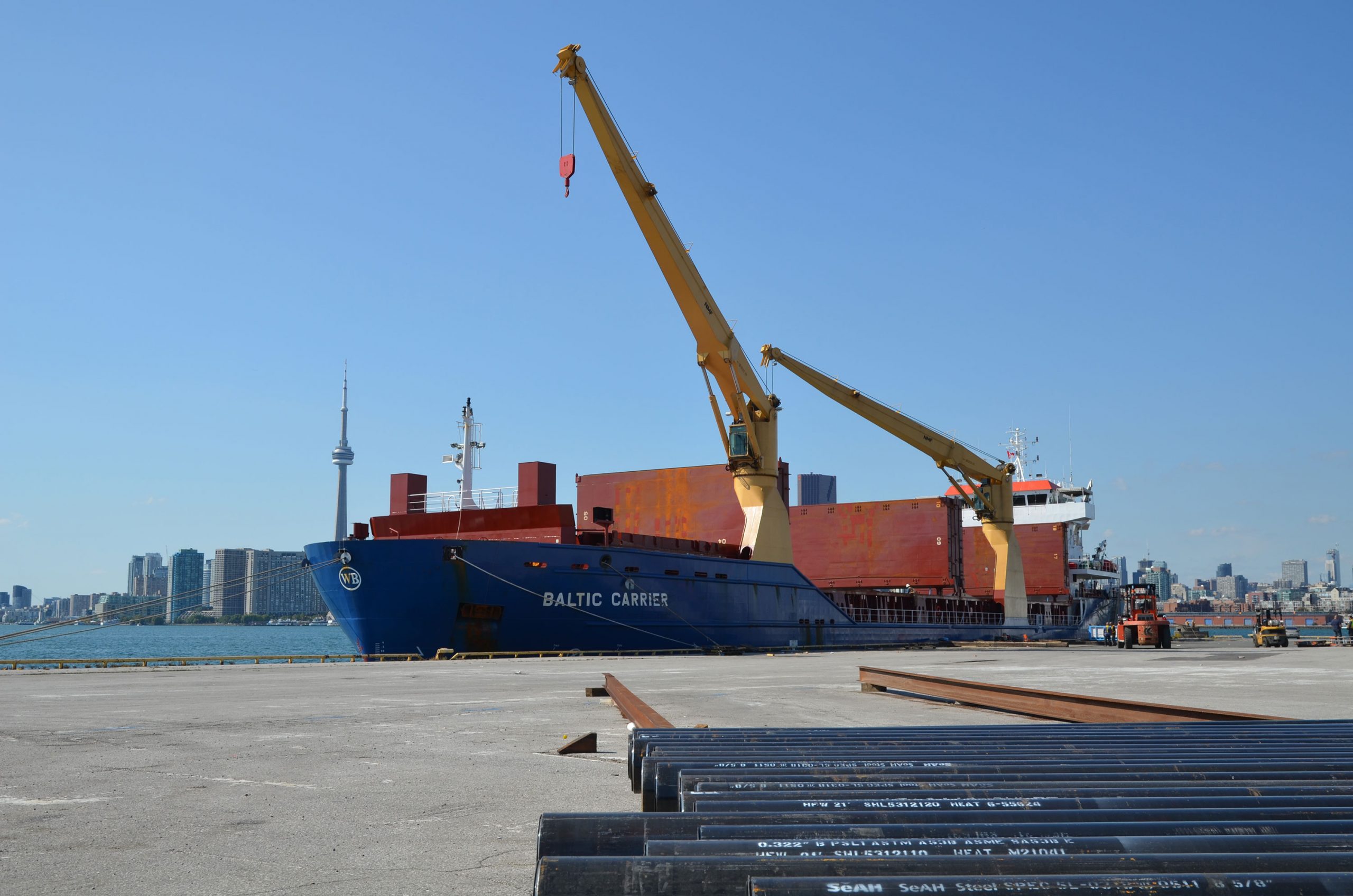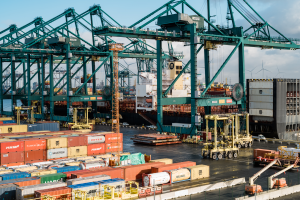Imports of cement, steel, sugar and salt moving through the Port of Toronto and directly into the heart of Canada’s largest city in 2021 surpassed 2.2 million metric tonnes for the 5th consecutive year. Bypassing trade gateways disrupted by the pandemic, Great Lakes – St. Lawrence Seaway shipping routes remained reliable and congestion free, reinforcing the Port of Toronto’s important role in the national supply chain.
Overall, 190 cargo vessels visited the Port of Toronto in 2021, delivering a range of bulk, project and general cargo products totalling 2,295,815 metric tonnes – a four per cent increase from 2020.
The Port had another strong year moving construction materials including steel coils and rebar, cement and aggregate. In 2021, the port recorded cement cargo and steel imports reaching 19 and 18-year highs respectively, with more than 734,000 metric tonnes of cement and 185,000 metric tonnes of steel transiting through the port to construction sites throughout the Greater Toronto Area.
Aggregate tonnage more than doubled year-over-year, with 215,232 metric tonnes moving through the port to supply various land erosion projects led by the Toronto and Region Conservation Authority. In addition to importing 572,683 metric tonnes of sugar from Central and South America to support Toronto’s food and beverage industry, the port moved 583,425 metric tonnes of salt and saw 4,365 metric tonnes of container services tonnage – a 15 per cent increase over 2020 for container services.
“Shipping has a major role to play in ensuring the sustained resiliency of our national supply chain. In 2021, the Port of Toronto continued to provide a reliable trade gateway for the transportation of goods to the Greater Toronto Area, connecting Toronto to marine ports around the world while much of our transportation sector experienced delays,” commented PortsToronto CEO Geoffrey Wilson.
“Further to the economic benefits to the region, shipping is a more efficient way to move goods and produces far less carbon emissions per tonne kilometre than other industries in Canada’s transportation system.”
“While the Port of Toronto will continue to play an essential role in our national supply chain in 2022, it will also play an important role supporting Toronto’s tourism sector as we anticipate hosting a record 37 cruise ships in 2022, including a number of new cruise ships designed for expedition cruising on the Great Lakes,” Mr. Wilson added. (photo Port of Toronto)





